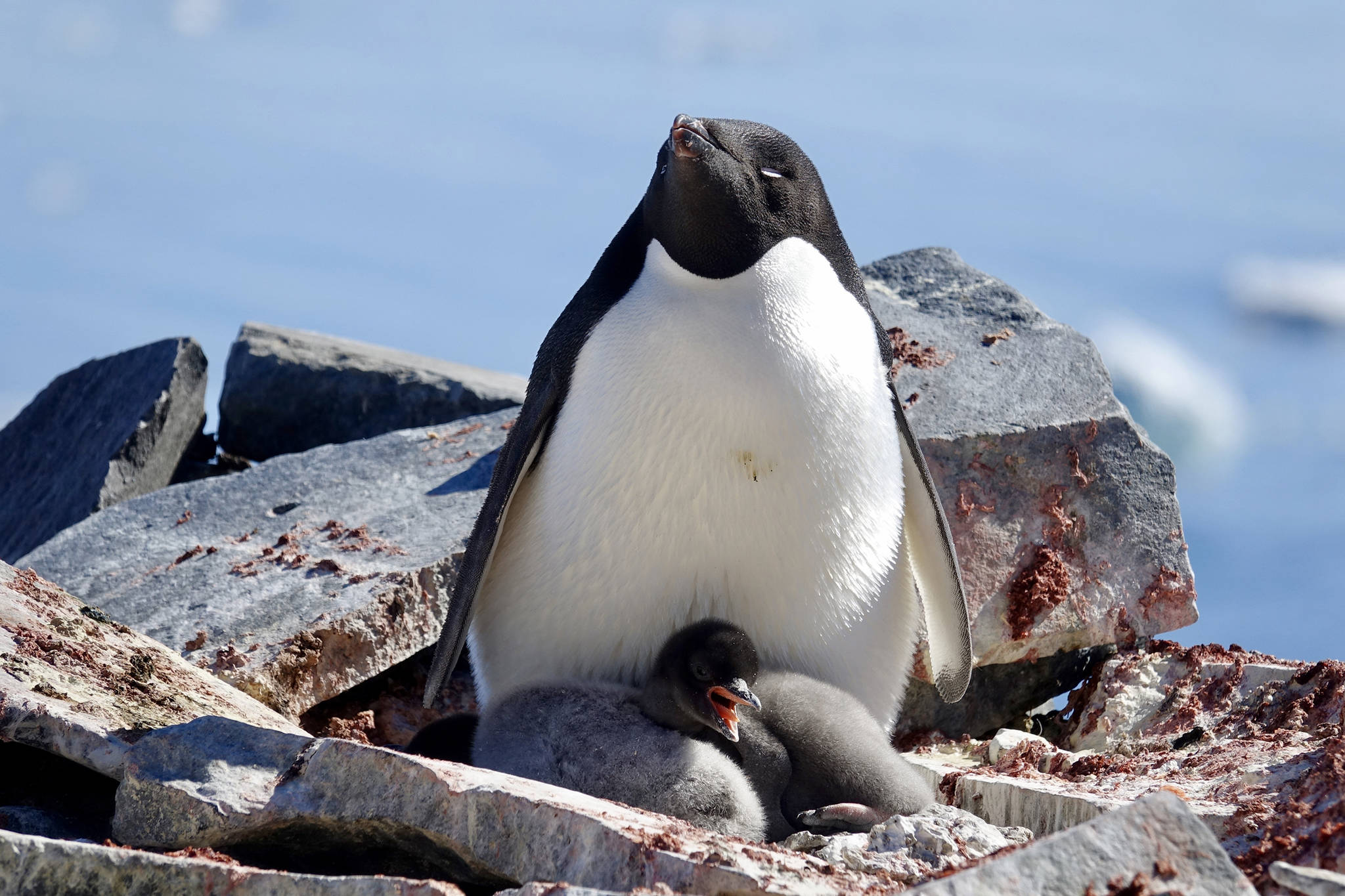Jack Kreinheder and his wife, Amy Carroll, went south for the winter — all the way to Antarctica.
The Juneau residents were on a boat in Antarctica for the solstice and Christmas Day for a once-in-a-lifetime trip that had been on their bucket list.
“My wife and I like to travel, and I’ve been retired for a few years from state government,” Kreinheder said. “We were talking about doing an Antarctica trip down the road, and we said, ‘Why wait?’ The appeal is the whole experience and kind of the adventure of going to the far end of the world.”
[PHOTOS: Mother Nature in Alaska]
Kreinheder presented photos, videos and anecdotes Thursday evening at University of Alaska Southeast’s Egan Lecture Hall. The free presentation was presented by the Juneau Audubon Society.
To get to Antarctica, Kreinheder and Carroll flew from Juneau to Seattle to Dallas to Santiago, Chile and finally to the southern tip of Argentina, where the boat portion of the trip began. About 10 days total were spent on the boat crossing a rough stretch of water known as the Drake Passage, where the Pacific and Atlantic oceans meet.
“They joke the price of admission to Antarctica is crossing the Drake Passage, but we — especially looking back at it —enjoyed it quite a bit,” Kreinheder said. “It was very dramatic.”
Encounters with wildlife were frequent from the get-go.
“We were followed by sea birds all the way down,” Kreinheder said.
They saw a variety of seals, whales, seabirds and penguins.
[Tracking footprints in the snow]
“There’s not a lot of terrestrial birds,” Kreinheder said. “It has no trees. It has almost every vegetation anywhere. The only vegetation we saw was lichen growing on the ice. It’s not a super diverse ecosystem like some other places, but still great wildlife.”
Isolation from humanity meant during landings, wildlife was largely indifferent to the travelers.
“Most of our interaction was with the penguins,” Kreinheder said. “We had six days down there, and we did two landings daily. It was prime nesting season for all the penguin species. We’d watch the nesting penguins for a while. My guess is most of the penguins would’ve seen people before, but they wouldn’t feel threatened. The penguins have no natural land predators. They could not exist anywhere where there were foxes or bears or wolves. They’re not afraid in that way.”
Penguins provided one of the most memorable sights of the trip, Kreinheder said. The colony consisted of nearly 200,000 nesting Adélie penguins.
“The first penguin colony we pulled into was massive,” Kreinheder said. “Just enormous, covering a huge swath of not only the beach but the hillside. Definitely a highlight of the trip.”
Scenery taken in during hikes and kayaking was another major perk.
Since the trip took place deep in the southern hemisphere, there were only about 90 minutes of nighttime beginning around 11:30 p.m., and it was summer.
Summer days near the Antarctic peninsula meant daytime highs in the mid 30s, Kreinheder said, and a few days it snowed.
“The boat was toasty warm, of course,” Kreinheder said.
However, a window of clear weather coupled with the near-constant daylight provided a highlight early in the trip.
“At midnight the captain got on the PA system and woke everybody on the ship and said, ‘Sorry to wake you up at midnight, but it is just spectacular,’” Kreinheder said. “Everybody got up, I stayed up until 4 in the morning. It was just beautiful pink and purple twilight all night long.”
“I feel very fortunate to have gone,” Kreinheder added. “It’s a very expensive trip, so for most people it’s once in a lifetime.”
• Contact arts and culture reporter Ben Hohenstatt at (907)523-2243 or bhohenstatt@juneauempire.com.

